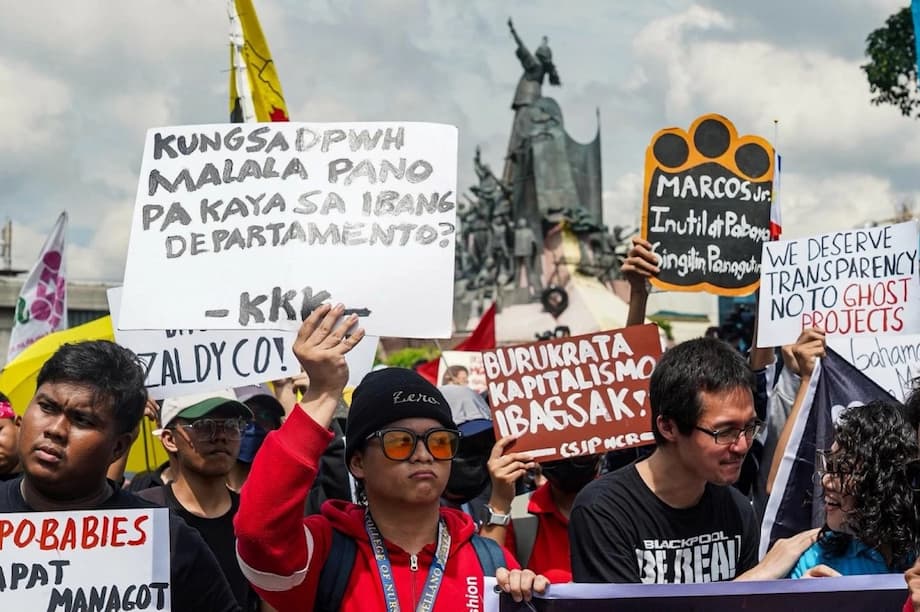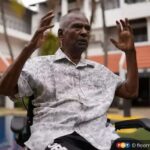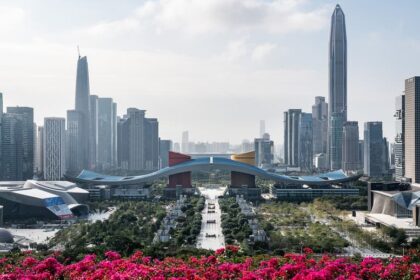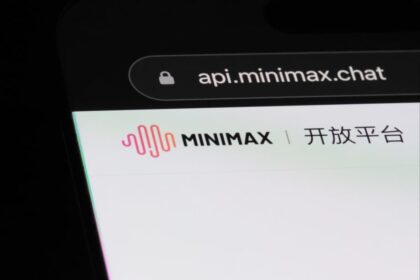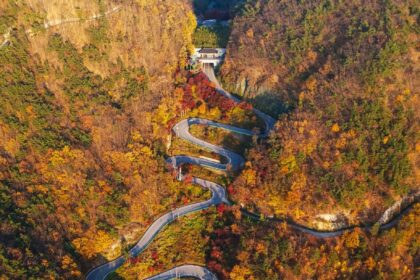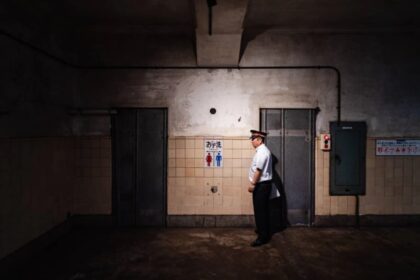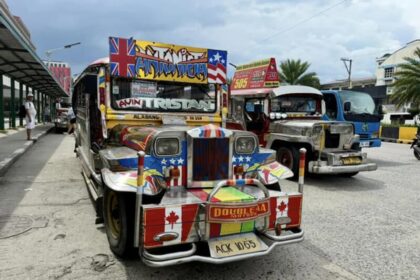Outrage builds as flood control scandal sparks nationwide rallies
Rising public anger over alleged corruption in flood control projects has moved from social media to the streets in the Philippines, with large demonstrations planned for September 21 in Manila and other cities. President Ferdinand Marcos Jr has urged citizens to make their voices heard while calling for calm, promising that an independent inquiry will hold any wrongdoers to account, including those in powerful political circles. The protests come after weeks of televised hearings that detailed substandard or non-existent public works and alleged kickbacks tied to billions of pesos in flood spending. Recent torrents that swamped Metro Manila and nearby provinces have sharpened the outrage, since many of the projects were meant to keep communities dry.
- Outrage builds as flood control scandal sparks nationwide rallies
- What set off the protests
- Inside the alleged money trail
- Marcos message, promises and policy moves
- Security posture and the push to keep protests peaceful
- Why September 21 carries weight
- Flood risk, climate stress and the cost of failed projects
- What the investigations have revealed so far
- Marcos support meets street energy
- What to Know
The controversy centers on about 545 billion pesos spent since 2022 on flood mitigation across the country. Lawmakers, public works engineers, and contractors have been named in hearings, while auditors and whistleblowers described ghost works, inflated costs, and poor documentation. The issue has already triggered the resignation of the public works secretary, the suspension of bidding for flood control projects, and new pledges from the president to end leaks in the infrastructure pipeline.
Police and troops have been placed on alert for the rallies, which coincide with the anniversary of the 1972 martial law declaration by the president’s late father, Ferdinand Marcos Sr. Organizers say the events will center on demands for transparency and accountability. Church leaders, student groups, labor organizations, and anti-corruption advocates have signaled support. Officials insist protests will be allowed so long as they remain peaceful.
What set off the protests
The spark came from congressional inquiries that aired allegations of large-scale diversion of funds in flood control works. Investigators cited projects that did not exist on the ground, facilities that failed soon after completion, and contracts that were poorly supported by paperwork. Anger intensified as flooding repeatedly overwhelmed neighborhoods that were supposed to benefit from new dikes, pumping stations, and drainage upgrades.
Students at the University of the Philippines and other campuses staged walkouts in recent days. Organizers are calling for mass assemblies at key sites in the capital, with some expecting crowds to converge at EDSA, the historic avenue of the 1986 people power revolt, and at Rizal Park. Police have prepared security plans and say they will respect the right to assemble.
Public criticism has not been limited to the streets. Business groups, Catholic leaders, and retired military officers have voiced frustration over the alleged mismanagement of funds. Many argue that leakages in a critical program have harmed ordinary Filipinos, who face frequent typhoons, rising rainfall intensity, and chronic urban flooding.
Inside the alleged money trail
Multiple lines of testimony in legislative hearings have described an infrastructure program that became a magnet for rent-seeking. While details vary, the core allegation is straightforward. Contractors and public officials steered funds into projects that underperformed, were overpriced, or were never built, then collected a share of the proceeds as kickbacks.
Ghost works and failing builds
Auditors say site inspections uncovered projects that existed only on paper, along with flood structures that were completed with poor materials or shoddy workmanship. Communities that expected relief instead faced repeated inundation. For residents, the issue is not abstract. Floods destroy small businesses, keep children out of school, and spread disease. When put to the test by heavy rain, weak infrastructure quickly reveals the cost of poor governance.
Concentration of contracts
Public disclosures by top officials highlighted unusual patterns in the allocation of flood budgets. The president cited instances where a small group of builders received a striking share of contracts. One set of figures shared by the government said 15 contractors accounted for roughly one fifth of flood control spending since 2022. That level of concentration raised red flags for investigators, who are now examining whether bidding was manipulated or whether intermediaries influenced awards.
Kickbacks and lavish lifestyles
Witnesses described cash payments routed to public officials and lawmakers in exchange for steering funds or approving change orders. Separate testimonies mentioned gambling sprees and luxury purchases allegedly financed by ill-gotten gains. Authorities have said they will pursue bank records, tax filings, and other documents to track money flows.
Marcos message, promises and policy moves
President Marcos has framed the moment as a test of credibility for his administration. He announced the creation of a new independent panel led by former Supreme Court justice Andres Reyes. The commission will scrutinize a decade of flood projects, issue subpoenas, seek records, hold hearings, and recommend cases for prosecution. The government also halted bidding for flood projects while reviews proceed, and the president said the 2026 flood control budget will be scrapped, with funds shifted to education, health, and agriculture.
Marcos has repeatedly said that the inquiry will spare no one, including friends and family, and that he understands why people are angry. He expressed support for protests, so long as they are peaceful. Introducing his stance in a briefing, he acknowledged the depth of public frustration and urged citizens to demand accountability from those who stole or wasted public money.
In remarks about the planned rallies, the president underlined that he shared the public’s sense of outrage.
President Ferdinand Marcos Jr said: “If I wasn’t president, I might be out in the streets with them.”
He added that demonstrators should channel their anger into lawful calls for accountability.
Marcos told protesters: “You let them know your sentiments, you let them know how they hurt you, how they stole from you, shout at them and do everything, demonstrate, just keep it peaceful.”
The Department of Public Works and Highways has new leadership after the previous secretary stepped down. A senior presidential aide, Vince Dizon, has taken charge and began dismissing officials tied to alleged wrongdoing, including personnel in Bulacan province. The shake-up signals that the executive branch wants to reclaim control of a program that became a focus of scandal.
Security posture and the push to keep protests peaceful
The Armed Forces of the Philippines and the national police are on heightened alert for the rallies, which officials describe as a precaution. The defense secretary and the military chief issued a joint statement rejecting calls for soldiers to withdraw support from the elected government. They stressed that the armed forces remain professional, non-partisan, and committed to the constitution through the chain of command.
Communications officials have cautioned against efforts to exploit public anger to destabilize the state. After warnings of potential agitators, an undersecretary said authorities would act if violence erupts, while reiterating people’s right to assemble and speak out.
Organizers of the September 21 events say the message is focused on corruption and public accountability, not on overthrowing the government. Labor groups, student alliances, and civil society networks have circulated guidelines for peaceful conduct at the rallies.
Why September 21 carries weight
The protest date lands on the anniversary of the 1972 proclamation of martial law by Marcos Sr. That period is associated with human rights abuses, crony deals, and the eventual ouster of the elder Marcos during the 1986 people power revolt. The timing gives the demonstrations historical resonance. It evokes a past in which mass mobilizations helped reset national politics and made public accountability a rallying cry.
The Marcos family’s name remains intertwined with debates about past corruption. Activists argue that not all stolen assets have been recovered, despite decades of effort by the state’s recovery commission. For critics, today’s controversy shows how patronage networks can reconstitute themselves across administrations unless checks and balances are strengthened.
The government says the present probe is different, with a commitment to independent scrutiny and a public accounting of how funds were spent. That pledge will be tested by the choices the commission makes, the speed of referrals to prosecutors, and the fortitude of agencies tasked with filing cases.
Flood risk, climate stress and the cost of failed projects
The Philippines sits in a typhoon prone corridor. It faces frequent landfalls and heavy monsoon rains. Metro Manila and many provincial capitals rely on flood control systems that include river dikes, retention basins, pumping stations, culverts, and improved drainage. These are complex networks. They only work when properly designed, built, and maintained.
Climate change is intensifying rainfall extremes across the tropics. When heavy storms stall over an urban basin, even well-built systems can be pushed to their limits. Poorly built works fail much faster. The human cost is severe. Homes are inundated, livelihoods are interrupted, and waterborne disease spreads. Lost classroom time and damaged roads add to the burden.
The Department of Finance has estimated that corruption tied to flood control cost the economy more than 118 billion pesos from 2023 to 2025. That figure captures only part of the damage, since the impact of recurrent flooding cascades through local economies. Fixing leaks in spending, getting quality for every peso, and focusing on designs that reflect present rainfall patterns can help lower risk for millions of residents in low-lying communities.
What the investigations have revealed so far
Separate probes by the House and Senate have put contractors and public works personnel under the spotlight. Witnesses have named dozens of individuals. Senators displayed evidence of projects that did not match their allocations, alongside contracts with sparse documentation. Some lawmakers were accused of collecting kickbacks. Those named have denied wrongdoing or have yet to comment publicly.
Government auditors cited a troubling pattern. Some projects appeared on budget sheets and completion reports, yet inspection teams could not verify that works existed. Others were finished but failed almost immediately, suggesting corners were cut in design or materials. The president said he saw instances of non-existent works during visits to flood-prone areas such as Bulacan. Authorities say the review will cover thousands of projects and will classify each as compliant, substandard, or fake.
The new commission can summon witnesses, collect documents, and recommend cases to the Ombudsman and the Department of Justice. It cannot impose penalties on its own. Its work will rely on cooperation from agencies like public works, budget, and internal revenue, as well as from banks and contractors. Former public works secretary Rogelio Singson and Baguio City Mayor Benjamin Magalong are advising the effort. A private sector audit specialist, Rossana Fajardo, has also been tapped to help trace paper trails and strengthen evidence.
Marcos support meets street energy
For many Filipinos, the president’s support for peaceful protest has opened room for broader civic participation. Student leaders say they intend to focus on the impact of flooding on daily life and the need to repair public trust in how budgets are spent. Church groups have called on parishioners to join in prayer and to stand with communities that have been hit hardest by repeated storms.
At a recent briefing, a communications official addressed concerns that agitators could hijack the moment.
Communications Undersecretary Claire Castro warned against “people who have ill intentions and want to destabilize the government,” while affirming that authorities would allow peaceful protests.
The image of thousands rallying on a date heavy with historical meaning will draw global attention. Whether the movement stays focused on reforms and whether the government sustains transparency will shape the next phase of this political test.
What to Know
- Large protests are planned for September 21 in Manila and beyond, fueled by anger over alleged corruption in flood control projects.
- President Ferdinand Marcos Jr has endorsed peaceful demonstrations and created an independent commission led by former Supreme Court justice Andres Reyes to investigate the past decade of projects.
- Audits and hearings point to ghost works, substandard builds, and unusual concentration of contracts, with 15 firms cited as receiving a sizeable share of funds since 2022.
- The government has suspended bidding for flood control projects and canceled the 2026 flood budget, redirecting money to education, health, and agriculture.
- The military and police are on alert but say they will protect the right to assemble while preventing violence.
- The Department of Finance estimates more than 118 billion pesos in economic losses from corruption linked to flood control between 2023 and 2025.
- Advisers to the commission include former public works secretary Rogelio Singson, Baguio Mayor Benjamin Magalong, and audit specialist Rossana Fajardo.
- Probes will move evidence to prosecutors, since the commission cannot impose penalties on its own.
- The protest date coincides with the martial law anniversary, giving the rallies historical resonance tied to past people power movements.


